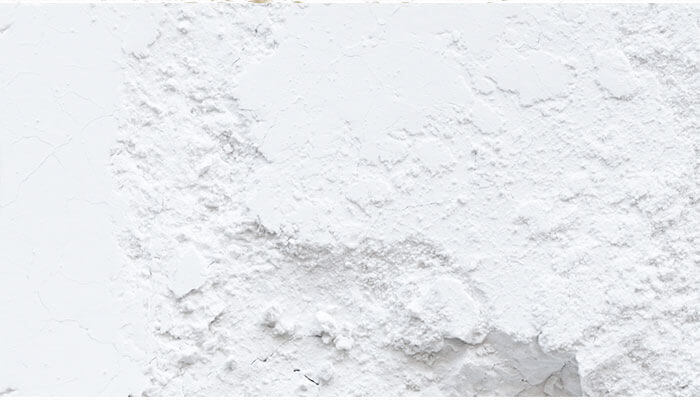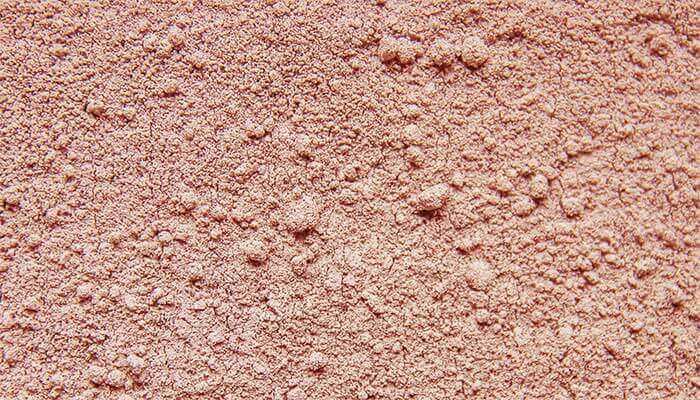Sakai Fish Farm, Hiroshima, one of the giant Koi producers in Japan, from 2000 to 2015, Sakai won the 8 Koi championship. One was three consecutive victories, which was the record first time in Koi championship history.
They are the top producer in the Nishikigoi industry. It’s been said that they spend millions of yen in a year on ‘’Refresh Powder’’, also known as “The Magic White Soil,” Which gives them a considerable boost in Koi growth and water quality.
What is Pond Clay/Koi Clay, or Refresh Powder?
“Refresh Powder’’ or Pond Clay, is a clay mineral from Yasawagi in Akita prefecture, Japan. Montmorillonite is another Identity of this Clay. Koi keepers use this powder or Clay all around the world.
There’s another type of Clay that is suitable for the job is “Bentonite.”
Today, we will discuss these Pond Clay; what is Pond Clay? What does pond Clay do? Is it really beneficial to Koi’s growth and water quality improvement? And the basics information you should know about the pond clay.
What is Pond Clay or Koi Clay?
Koi or Pond Clay is high purity Montmorillonite/Bentonite Clay powder rich in calcium, potassium, calcium carbonate, Sodium, iron, magnesium, and more. There’re 16 to 78 essential minerals in this Clay.
This powder is used broadly in Koi ponds, aquariums, and water gardens all around the world.
Pond clay adds and replenishes those minerals and detects the components that usually are available in a natural pond.
What does pond Clay do in a Pond?
Collectively, these minerals help to supply nutrition and keep the water clean and aid in improving your fish’s health and color.
Also, the Pond Clay dissolves slowly into the water through the ion exchange for harmful and other extra materials of the Koi pond.
Best Pond/Koi Clay or Powder
Lots of Pond Clay powder or clays are available in the market. But, the two basic types of clays, Montmorillonite and Bentonite, are suitable for ponds, not all the others.
Quality and mineral presence differ from Clay to clay. But Montmorillonite and Bentonite are fairly the same.
Now, let’s talk about these two in detail.
Montmorillonite Clay
Montmorillon is a part of the Vienne department, which is in the Nouvelle-Aquitaine region of central-western France.
Montmorillonite was named after that commune of France, where this soil was first discovered; Montmorillon Clay Kusuriin France.
What is Montmorillonite Clay?
Montmorillonite is a very tender or soft clay, affluent in silica and various minerals. This Clay has a perfect particle size of around 1 micrometer (1 Thousand of a Millimeter in Diameter), or one μm (Micrometer), and thickness is about 0.98 nm (Nanometer).
Now the major portion of this clay powder is mined from the Yasawagi district in Akita prefecture in Japan.
You know what!
Refresh Powder, The Magic White Soil, Pond Clay, Koi Clay, and Marvelous soil all these names are commonly called Montmorillonite.
Another interesting factor about this soil is-
Japanese locals use this Clay as an oral medicine for injury, diarrhea, toothache, and similar.
Bentonite Clay
what is Bentonite Clay?
Bentonite Clay is an absorbent type of Clay that usually forms from volcanic ash ages. This Clay absorbs “negatively charged’’ toxins from water and skin.
Bentonite clay was also named after the place called- Fort Benton, a city of Chouteau county, north-central Montana, U.S.
This Clay was first discovered in that area. Bentonite Clay mainly consists of Montmorillonite and is formed from volcanic ashes in the presence of water.
Types of Bentonite Clay:
There’re three different types of Bentonite Clay-
- Sodium Bentonite
- Calcium Bentonite
- Potassium Bentonite
1. Sodium Bentonite
Sodium Bentonite expands when this Clay is wet. They absorb as much as several times the Clay dry mass in water.
It has a super colloidal (Phase separated Mixture: Creating different phases from a homogenous mixture) property.
Sodium Bentonite has great swelling properties. It’s also known as high-swell Clay. Pond enthusiasts around the world use this Clay as an alternative to a pond liner.
Sodium Bentonite has high swell capacity support to maintain the swelling characteristics indefinitely without providing any extra additives. But, Calcium Bentonite requires to use of additives to keep working as a sealant.
Cost and performance both are great for using Sodium Bentonite as a sealant than a usual pond liner.
2. Calcium Bentonite
Calcium Bentonite is good at adsorbent ions solution, fats, oils, and other negatively charged toxins.
People also use Calcium Bentonite clay to detoxify the body, improve skin tone, improve digestion, and many more.
3. Potassium Bentonite
This Clay is also known as potash bentonite clay or K-bentonite. As per name suggests, Potassium Bentonite is rich in potassium.
Among these three, Sodium and Calcium Bentonite are suitable to use in the pond. And Sodium is better than Calcium Bentonite to use in a pond.
Montmorillonite vs Bentonite Comparison
Whatever you call it, Montmorillonite or Bentonite, pond enthusiasts call this Clay KoiNendo.
Montmorillonite and Bentonite clays are similar and the same thing. But, Montmorillonite purer than Bentonite.
Bentonite is less pure and has an impure core.
Bentonite clays are grouped under the Smectite or Montmorillonite group of clays.
Different brands use different names; this is the reason for the confusion.
There is no single chemical formula for this Clay. Rather, its mineral level differs from where it was mined. Mineral level and presence could vary from layer to layer in the mining area.
What Does Pond Clay Do?
When the Clay is used in pond water, the minerals stored in the Clay increase the production of enzymes (Enzymes are proteins or biological molecules that crucially improve the chemical reactions virtually within cells. Hence, they’re important for life and assist a wide range of crucial functions in a body- metabolism, and digestion) and are thus favorable to all living things, such as – fish, plants, and all other living organisms or bacteria in your pond and filters.
Also, Pond Clay has negatively charged particles that bind and attract positively charged toxins and other heavy metals in your pond water. This Clay performs better than charcoal and other filter products on the market.
Pond Clay also raises the water quality and makes the water healthier for the pond inhabitants and fish.
Furthermore, pond clay boosts water clarification by acting as a natural flocculent, which causes particle suspensions of the cloud pond water.
Do Koi Pond Need Clay?
Whether you’re using Montmorillonite or Bentonite clay in your Koi pond, are there any benefits to using Clay in your Koi ponds?
Yes, of course, there’re multiple advantages to using Clay in a Koi pond.
First of all, why does a Koi pond need Clay?
Fish needs minerals and trace elements in their diets. Koi are no different. If a pond is filled for the first time, it is going to include minerals from the main water source unless they’ve been removed by a water purifier or any other artificial means.

Useful minerals will soon be absorbed by the fish and other bacteria in the biological filter. Changing water and methods can help replace those minerals in the pond water. Still, the problem is, can the mains water supply contain enough minerals and other trace elements, and whether those minerals are appropriate?
From the water, Bacteria alone use vast amounts of carbonate. Koi fish eject ammonia in a significant amount, and as most of us know, ammonia is toxic for the pond water.
Several distinct factors influence just how much ammonia a Koi could discharge; however, 40 milligrams of ammonia could cause from only 1 gm of a typical Koi food.
The recommended feeding rate is 2 percent of a fish’s body weight every day. So, every day 20 gm food for a 1 kilogram Koi.
Straightforward arithmetic states that 800 mg of ammonia will produce from that 20 gm food.
That indicates, that each hour, 33 mg of ammonia is discharged from a one kilo Koi on a regular diet. However, this isn’t the exact amount, just a simple figure to give you an idea. All these have to be processed by the biological filter.
Maximum Koi keepers are aware of the fact that in a biological filter, two species of bacteria can convert that ammonia. First to nitrate, another probable toxic for your fish. Then to nitrate, except at high levels, which is comparatively harmless for the Koi fish.
Do you know?
Those bugs require a total of 7.2 milligrams of carbonate for every 1 mg of ammonia they convert.
Leave those complex chemistry and think about this in simple terms; Without those carbonates and oxygen, the bugs in the biofilter can’t process those ammonia Koi excrete every hour.
Even the Koi need a source of carbonate, too in a lesser amount. And the easiest way to provide those essential minerals and trace elements in your pond is to use some well-branded clay.
Final Say
Now, you know what pond clay is, what pond clay do, types of pond clay, and do koi ponds need Clay.
Well, we don’t want to brag anymore about it today; we will discuss- how to use Clay in your pond, dosage, and more details in another article.
Clay provides lots of advantages for your Koi, pond water, and other pond inhabitants.
Let’s hear your opinion:
What Koi Clay are you using right now? And which one is best for you?



